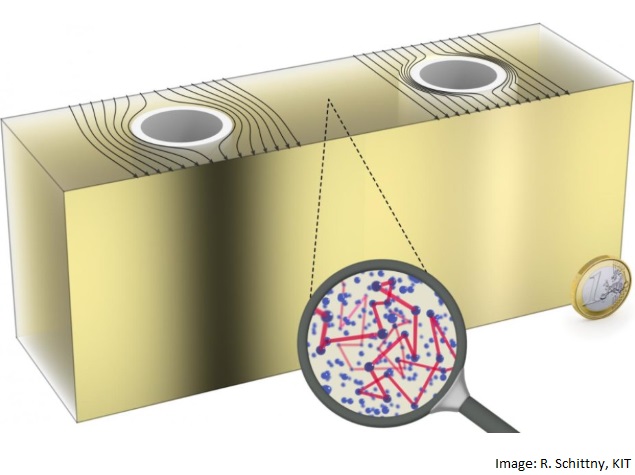- Home
- Science
- Science News
- Portable 'Invisibility Cloak' Invented by Researchers
Portable 'Invisibility Cloak' Invented by Researchers

The cloak works using diffused scattered light and like frosted window panes, it lets light in but hides the source of light.
By scattering light, the material slows down the propagation speed of light waves through the medium.
The light can then be sped up to make up for the longer path length around the hidden object.
"Our cloak takes advantage of the much lower effective propagation speed in light-scattering media," said Robert Schittny, from Germany's Karlsruhe Institute of Technology, who led the project.
The cloak cannot hide a human, but it can make small objects disappear from sight.
In the cloak, the object to be concealed is placed inside a hollow metal cylinder coated with acrylic paint, Daily Mail reported.
The tube is embedded within a block of polydimethylsiloxane, a commonly used organic polymer, doped with titanium dioxide nano-particles that make it scatter light.
If the time light takes to travel through the polydimethylsiloxane block is proportionate to the time it takes to travel through the cloak, the core will become invisible.
For the latest tech news and reviews, follow Gadgets 360 on X, Facebook, WhatsApp, Threads and Google News. For the latest videos on gadgets and tech, subscribe to our YouTube channel. If you want to know everything about top influencers, follow our in-house Who'sThat360 on Instagram and YouTube.
Related Stories
- Samsung Galaxy Unpacked 2025
- ChatGPT
- Redmi Note 14 Pro+
- iPhone 16
- Apple Vision Pro
- Oneplus 12
- OnePlus Nord CE 3 Lite 5G
- iPhone 13
- Xiaomi 14 Pro
- Oppo Find N3
- Tecno Spark Go (2023)
- Realme V30
- Best Phones Under 25000
- Samsung Galaxy S24 Series
- Cryptocurrency
- iQoo 12
- Samsung Galaxy S24 Ultra
- Giottus
- Samsung Galaxy Z Flip 5
- Apple 'Scary Fast'
- Housefull 5
- GoPro Hero 12 Black Review
- Invincible Season 2
- JioGlass
- HD Ready TV
- Laptop Under 50000
- Smartwatch Under 10000
- Latest Mobile Phones
- Compare Phones
- HMD Key
- Redmi Turbo 4
- Vivo Y200+
- Lava Yuva 2 5G
- OnePlus Ace 5
- OnePlus Ace 5 Pro
- Oppo A5 Pro 5G
- Vivo Y29 5G
- Asus Zenbook S 14
- MacBook Pro 16-inch (M4 Max, 2024)
- Honor Pad X9 Pro
- Honor Pad V9
- boAt Enigma Gem
- boAt Enigma Daze
- Sony 65 Inches Ultra HD (4K) LED Smart TV (KD-65X74L)
- TCL 55 Inches Ultra HD (4K) LED Smart TV (55C61B)
- Sony PlayStation 5 Pro
- Sony PlayStation 5 Slim Digital Edition
- Blue Star 1.5 Ton 3 Star Inverter Split AC (IC318DNUHC)
- Blue Star 1.5 Ton 3 Star Inverter Split AC (IA318VKU)
-
 New Study Uncovers Vital Ocean Processes for Carbon Storage and Climate Regulation
New Study Uncovers Vital Ocean Processes for Carbon Storage and Climate Regulation
-
 Lake Mendota's Bacteria Are Stuck in an Evolutionary Loop, Finds Study
Lake Mendota's Bacteria Are Stuck in an Evolutionary Loop, Finds Study
-
 First-Ever Female Burial with Weapons, Believed to Be a Warrior, Discovered in Hungary
First-Ever Female Burial with Weapons, Believed to Be a Warrior, Discovered in Hungary
-
 JUNO Neutrino Detector Nears Completion, Set to Begin Operations in 2025
JUNO Neutrino Detector Nears Completion, Set to Begin Operations in 2025











